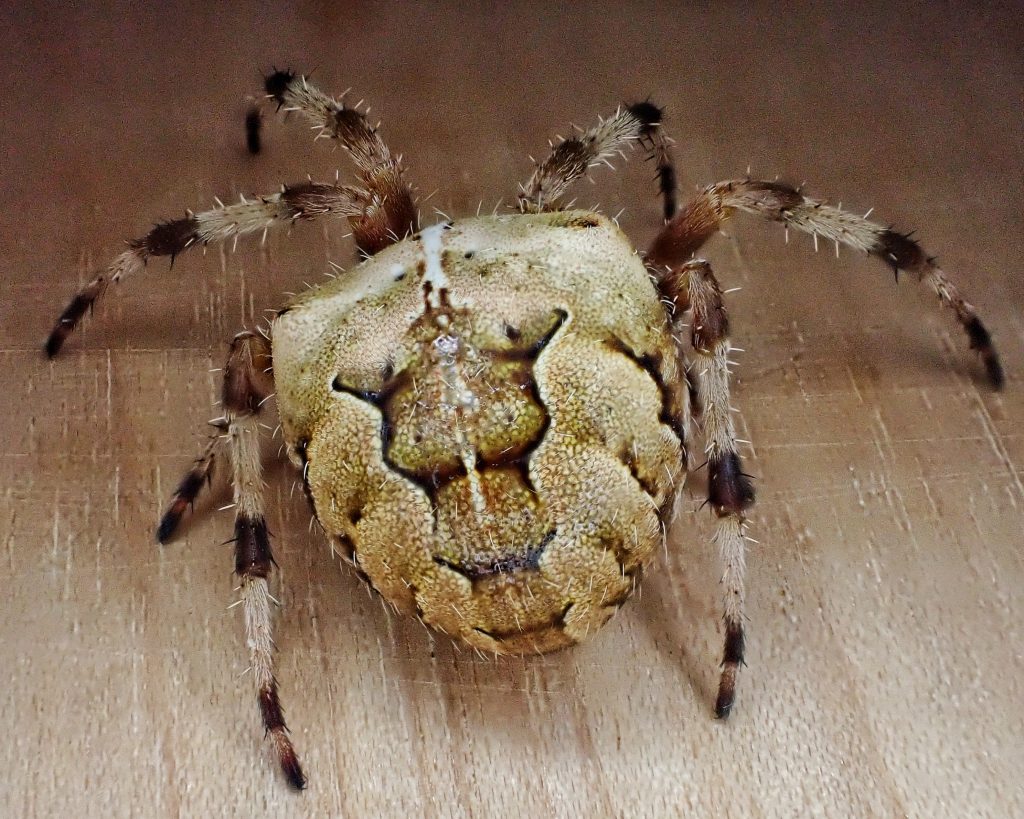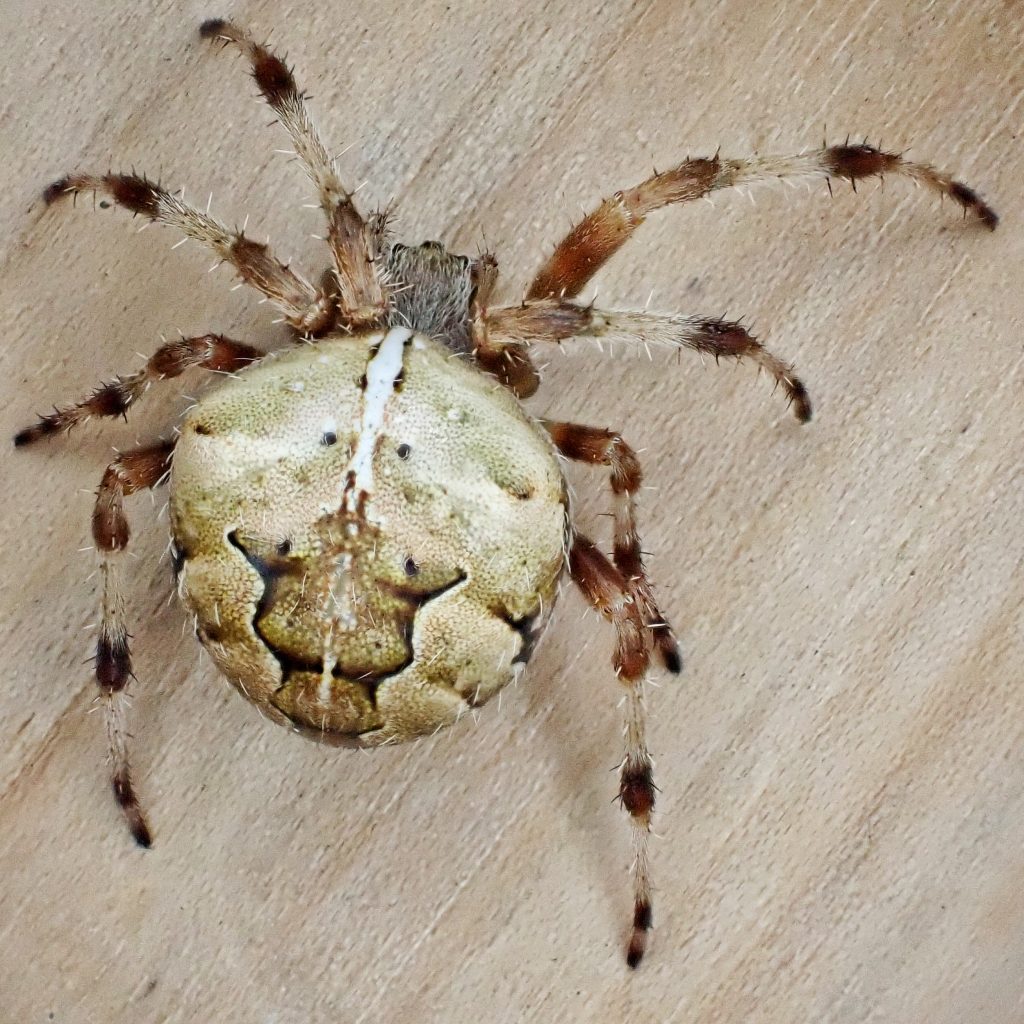
This spider represents at least the 5th time I’ve brought home an Araneus orb weaver that I thought would be new to me, and the first time that it didn’t turn out to be yet another variation of Araneus diadematus (Cross Orbweaver). Not only did it make me very happy to finally find an Araneus gemma (a fact which was confirmed by Rod Crawford), but I was relieved that this spider didn’t die in vain, for (unlike several of the other specimens) it was unfazed by refrigeration and wouldn’t allow me to get decent ventral photographs, or even examine it under the stereoscope, when it was still alive.
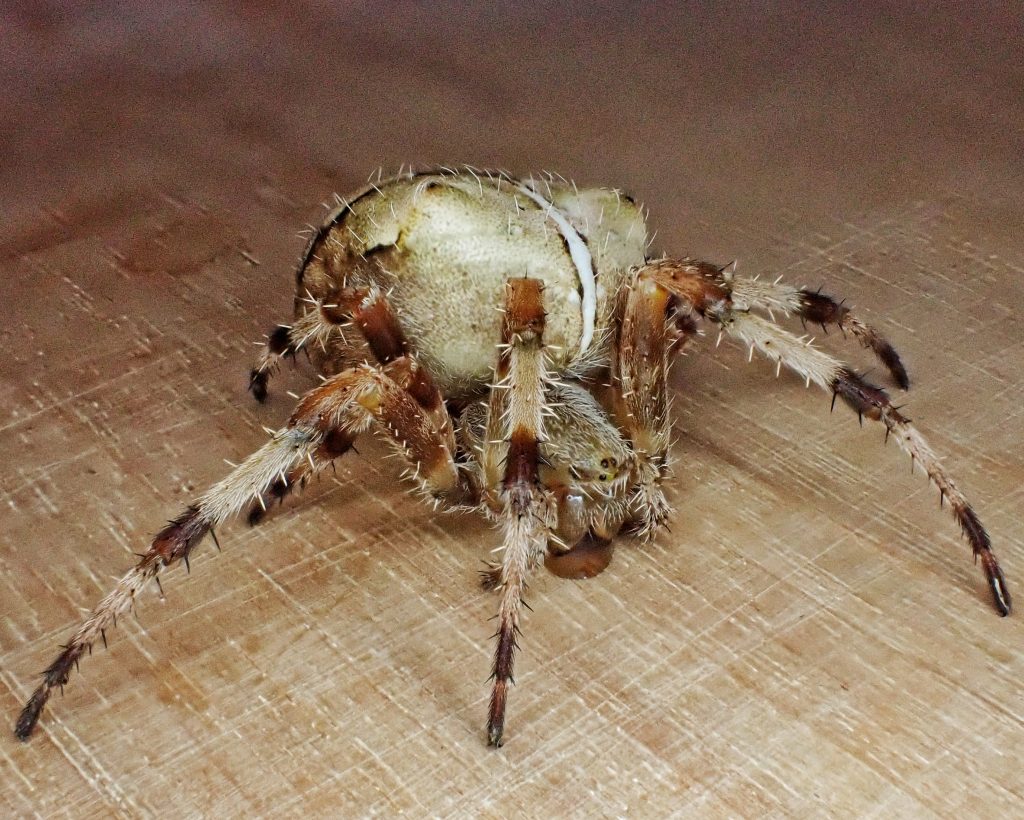
Unfortunately, it is hard to find information specific to this species. I have 5 books on spiders, and only one of them even mentions A. gemma, and all it says is that they are similar to A. gemmoides. Even the authoritative paper on the subject, “THE DIADEMATUS GROUP OF THE ORB-WEAVER GENUS ARANEUS NORTH OF MEXICO (ARANEAE: ARANEIDAE)” by Herbert Levi (1971) says very little about the natural history of this species. So most of what I say here is cobbled together from things known to be true of Araneus in general.
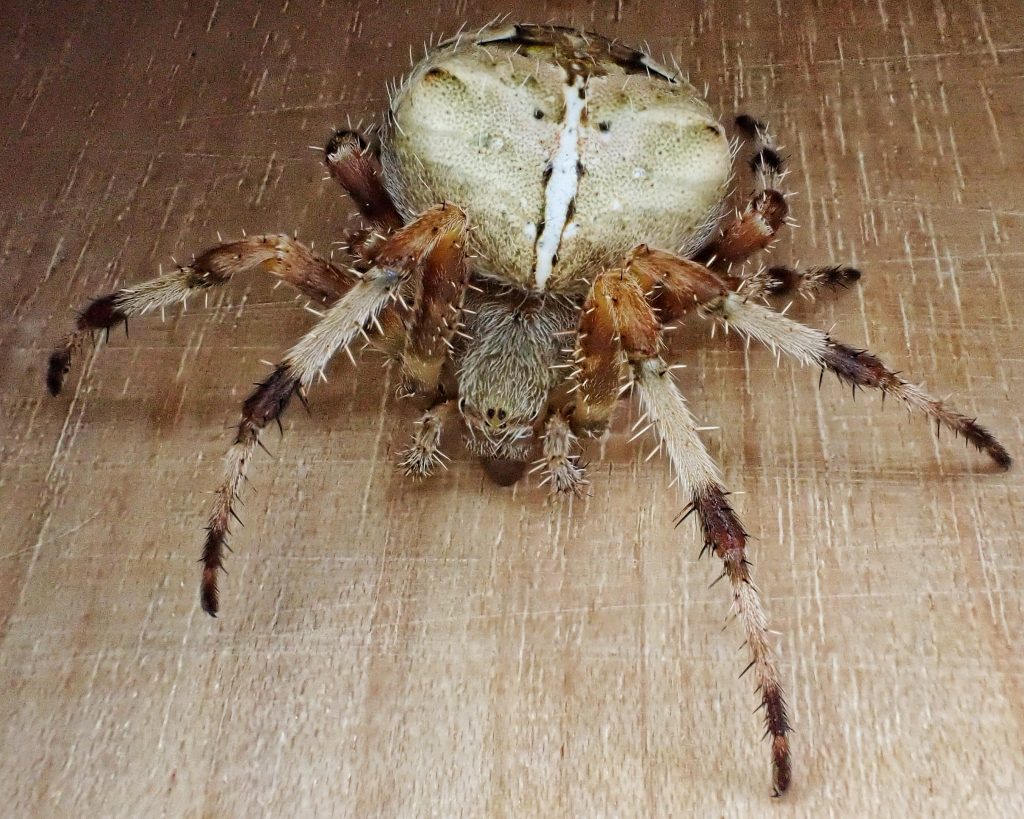
“Species [of Araneus] living in the open in herbaceous vegetation tend to have an oval abdomen…while those living on trees and cliffs have humps. The adaptation of this curious correlation is not known, but is also believed true of European species. It has been suggested (W. S. Shear, personal communication) that only those that have a retreat in curled up leaves lack humps…Populations of A. gemmoides are relatively uniform except for coloration in the area of overlap with A. gemma. Apparently the two species hybridize and introgression is taking place with gene flow into the A. gemma population…In courtship the male plucks web threads in a rhythm characteristic for his species. Females do not respond to the plucking of a male of the wrong species…All species make an almost vertical orb web with about 18-30 radii, with a retreat above to the side of the web in leaves, bark, or lichens and connected with the hub by a signal line (Plate 2). During the day the spider rests in the retreat, at night usually in the center. The center has an irregular mesh.” v.141 (1971) – Bulletin of the Museum of Comparative Zoology at Harvard College – Biodiversity Heritage Library, by Herbert Levi.
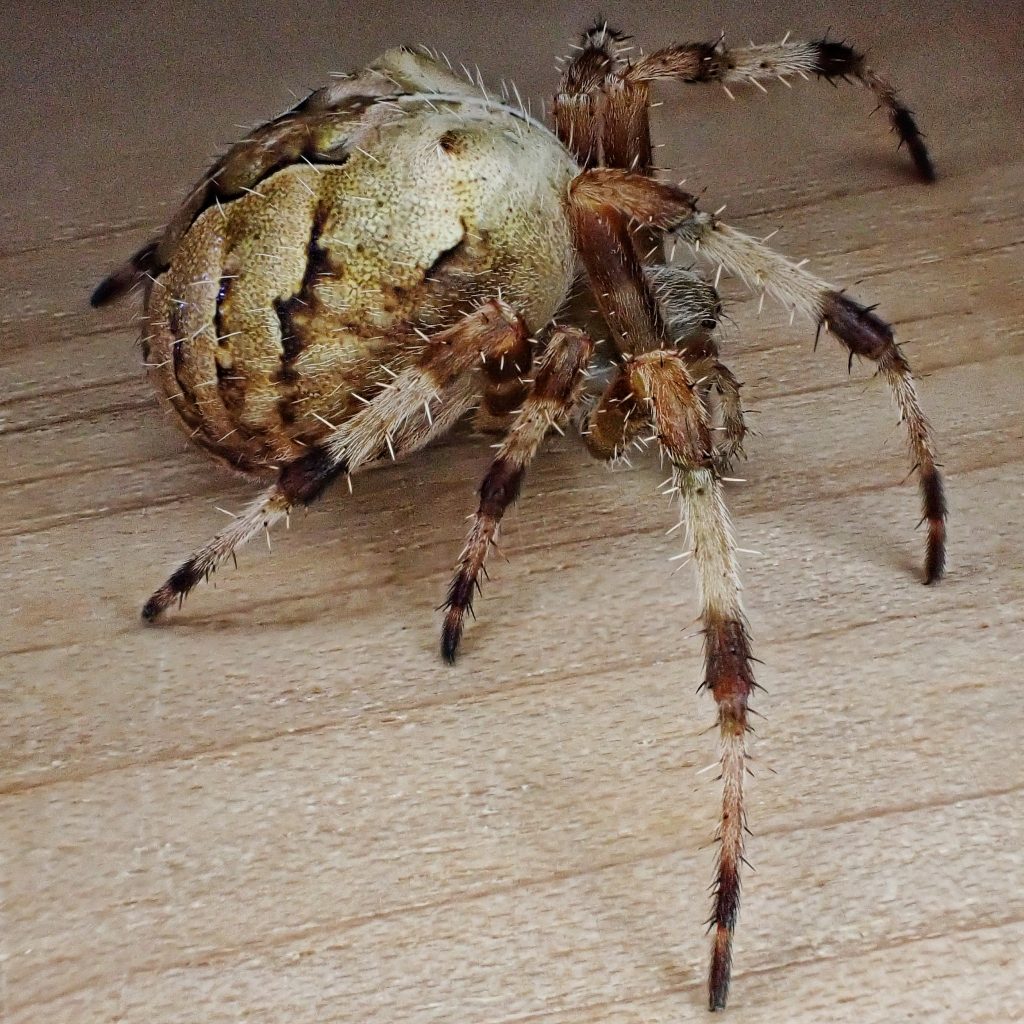
I see these listed in some resources with the common name of cat-faced spider, but apparently that epithet is more properly applied to Araneus gemmoides, which is somewhat ironic since gemmoides means ‘like gemma’, and it seems that the spider that was identified first should get the common name. (ETA- per Rod Crawford, the reason A. gemmoides gets the nod for the sobriquet ’cat-faced’ is because they have larger humps, the ‘ears’ of the cat’s face). But it’s irrelevant anyway, since Araneus gemma is the name they are recognized by worldwide, regardless of location or language of choice.
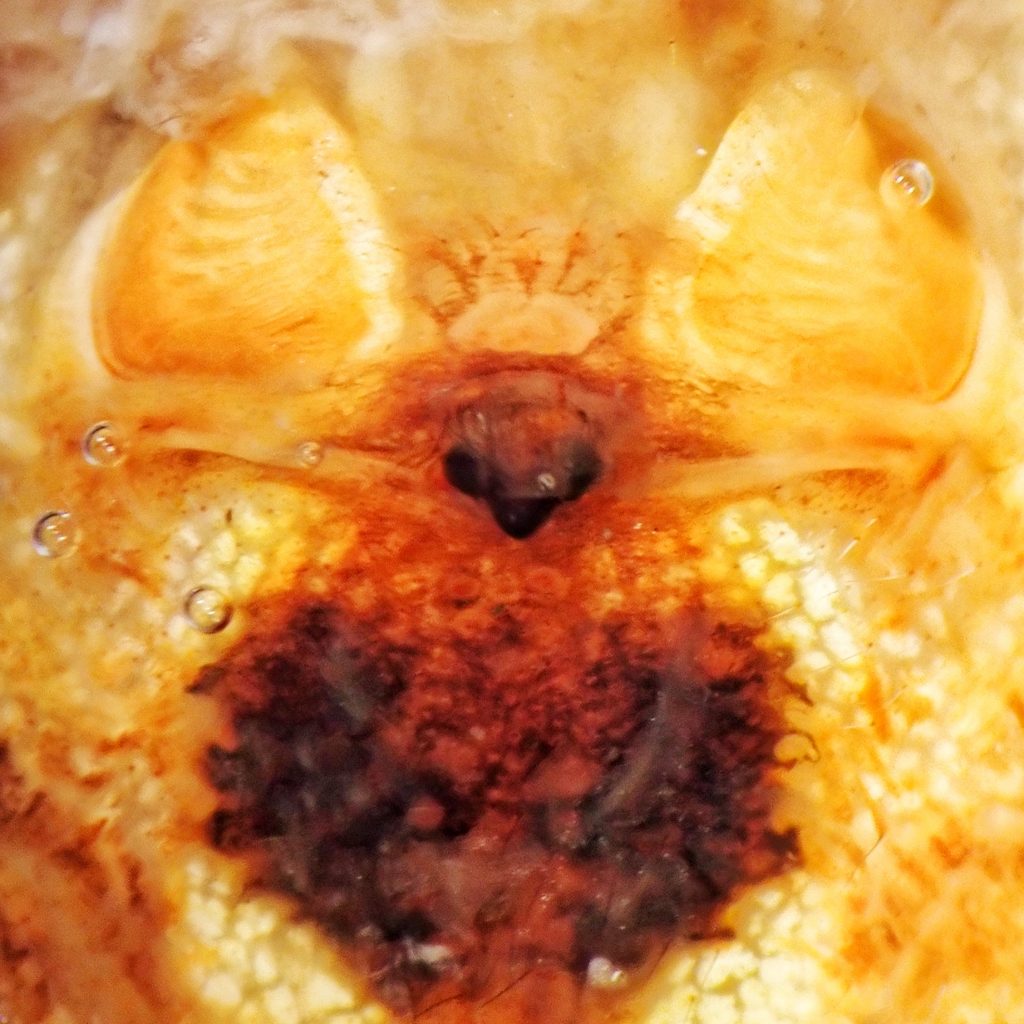
Description– Medium to large (females 9-19mm total body length, males 6-9mm total body length) orb weaver with a pointed hump on each side near the front of the abdomen, banded legs, and a hairy carapace; tends to be tan to orange, with a solid medial line on the front half of the abdomen and no transverse line/spots, and to have what they call a ‘heart mark’, a sort of vase shaped pattern toward the rear of the abdomen; legs tend to be banded in brown/grey/black, and lack bright colors.
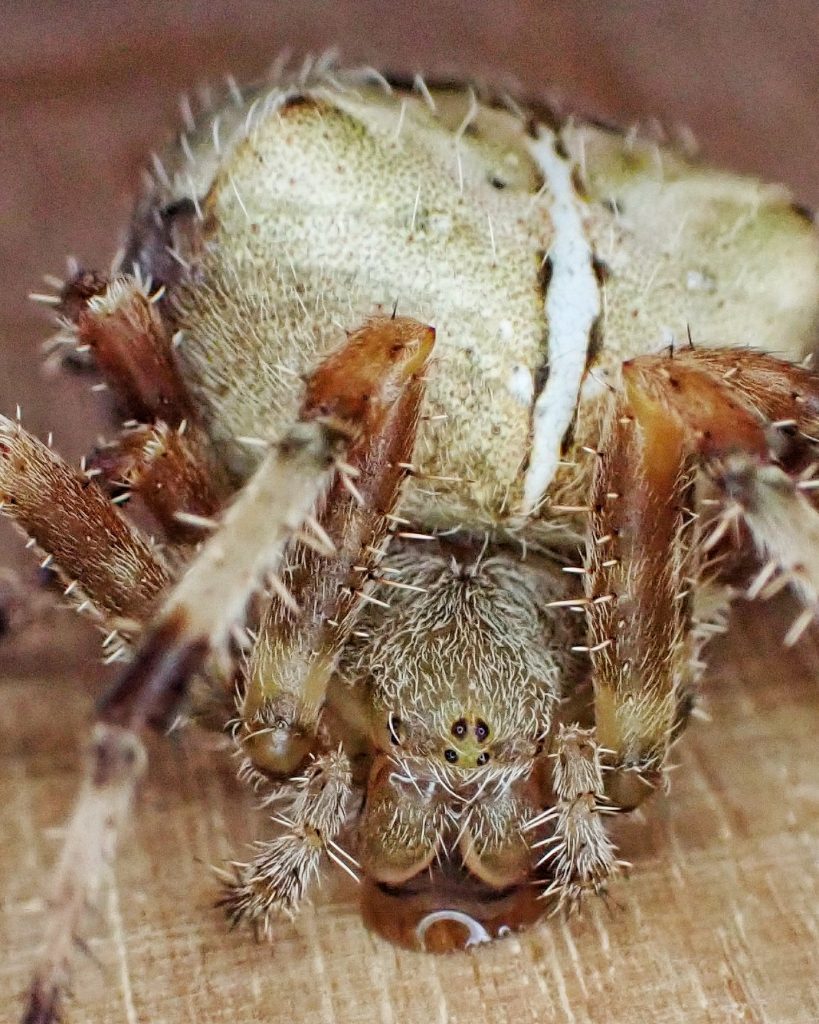
Similar species– As I mentioned for Antrodiaetus pugnax, positive identification requires microscopy and a key, like this one here, and variation of pattern and color within a given species often overlaps with variations in other species; Araneus gemmoides tends to have a transverse line with v-marks between the humps, and tends to lack a white medial line on the abdomen ; Araneus diadematus (Cross Orbweaver) tends to have a pattern of white dots and slashes that forms the shape of a cross; A. andrewsi tends to be dark with muted colors and few or no white lines/spots; A. marmoreus has orange femurs, and tends to lack light colored lines/spots.
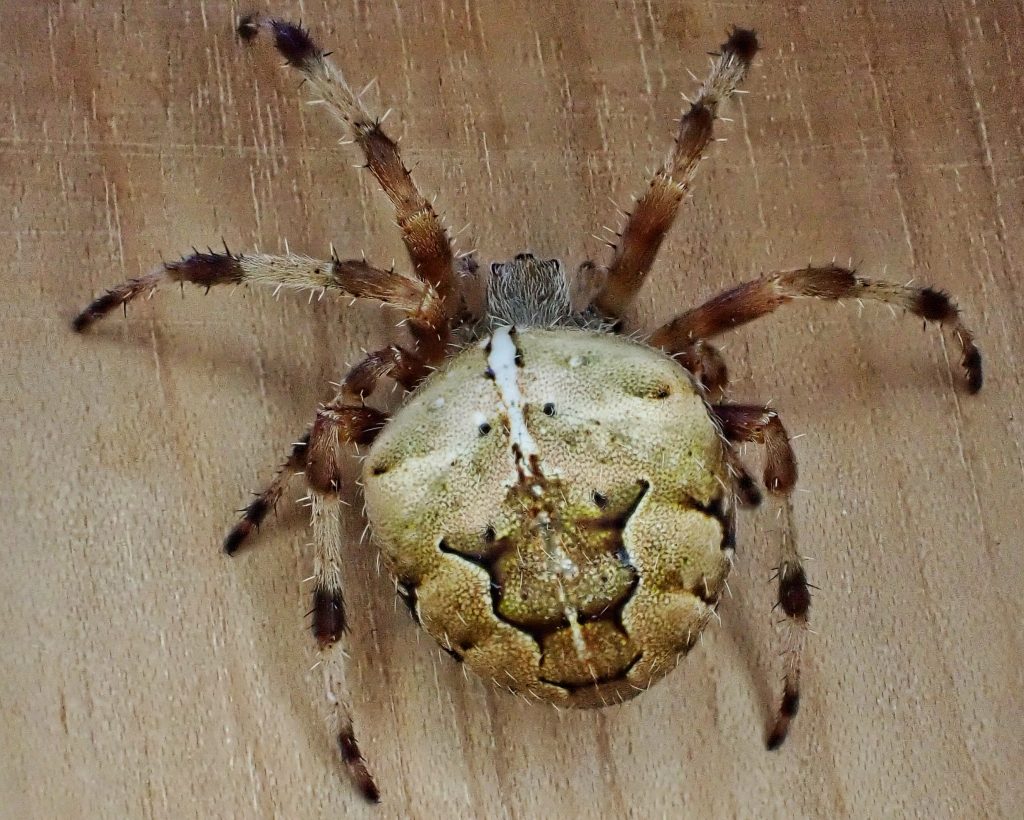
Habitat– Open forests, forest edges, and around buildings.
Range– “Western Montana west to British Columbia and south to California” Species Araneus gemma – BugGuide.Net; from the only range map I can find it appears that in the PNW this species is primarily found west of the Cascades, in the Siskiyou and Klamath mountains, and in montane areas on the east side.
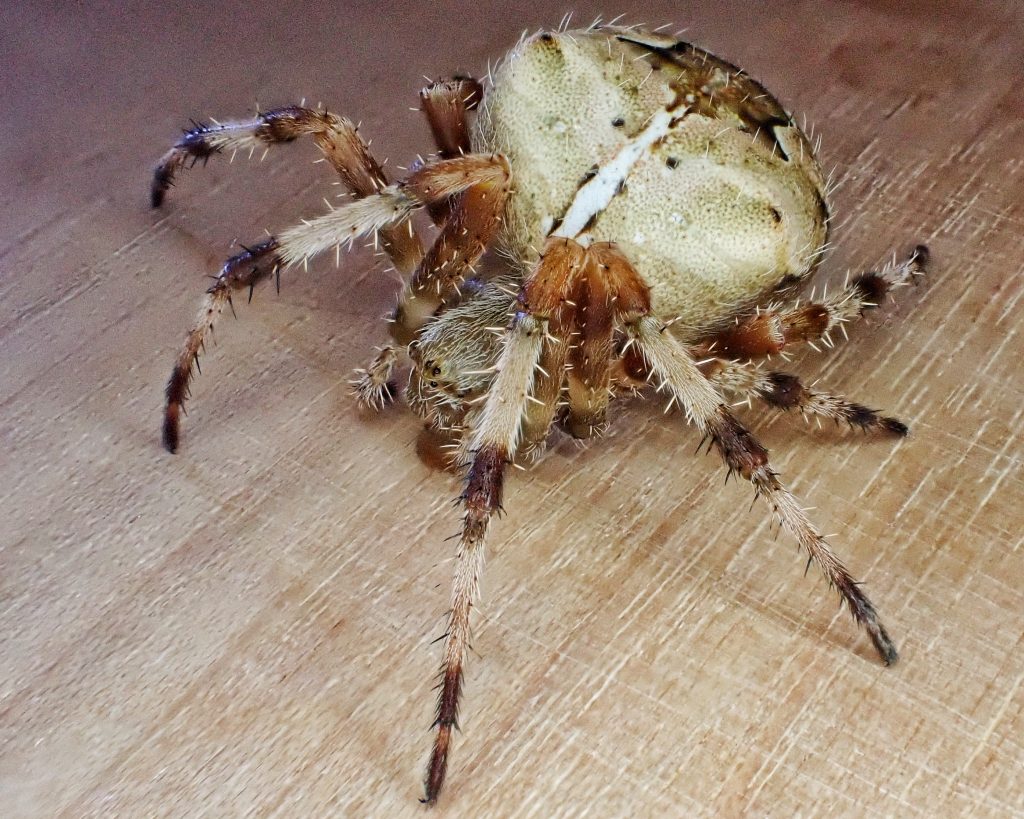
Eats– Presumably anything that the web can contain and the spider can subdue. “One A. gemmawas collected from a hole in an olive tree (Olea europea) feeding on a ruby-crowned kinglet (Regulus calendula) which was caught in its web.” v.141 (1971) – Bulletin of the Museum of Comparative Zoology at Harvard College – Biodiversity Heritage Library
Eaten by– Insectivores of all classes, probably primarily gleaning birds.
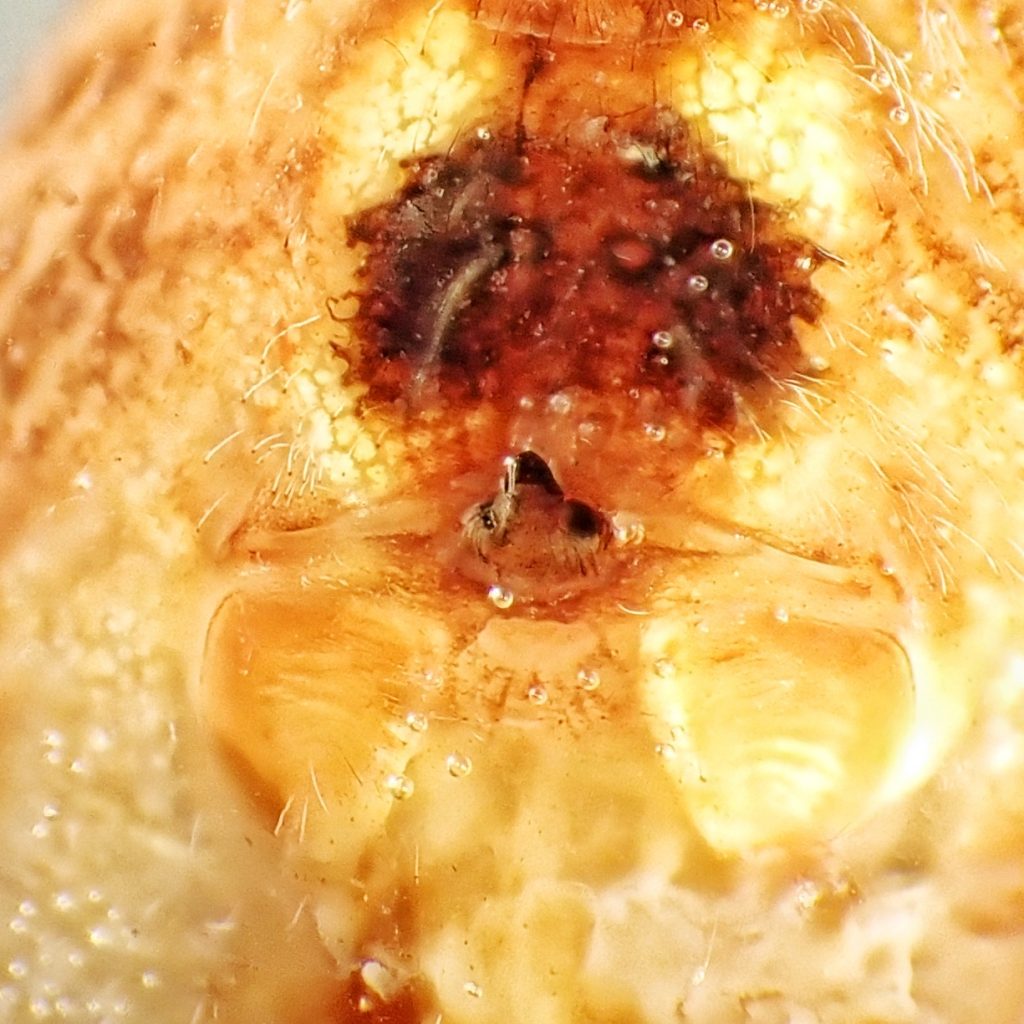
Adults active– Summer until late fall/early winter.
Life cycle– ““All North American Araneus of the diadematus group have similar life histories. There is one generation, which matures in summer, mates in summer, and dies in fall, after making a loose fluffy egg sac (Plate 1). Spiderlings leave the egg sac in spring.” v.141 (1971) – Bulletin of the Museum of Comparative Zoology at Harvard College – Biodiversity Heritage Library
Etymology of names– Araneus is from the Latin word for spider. The specific epithet gemma is from the Latin word for ‘bud/gem’, but I cannot ascertain what McCook was referring to.
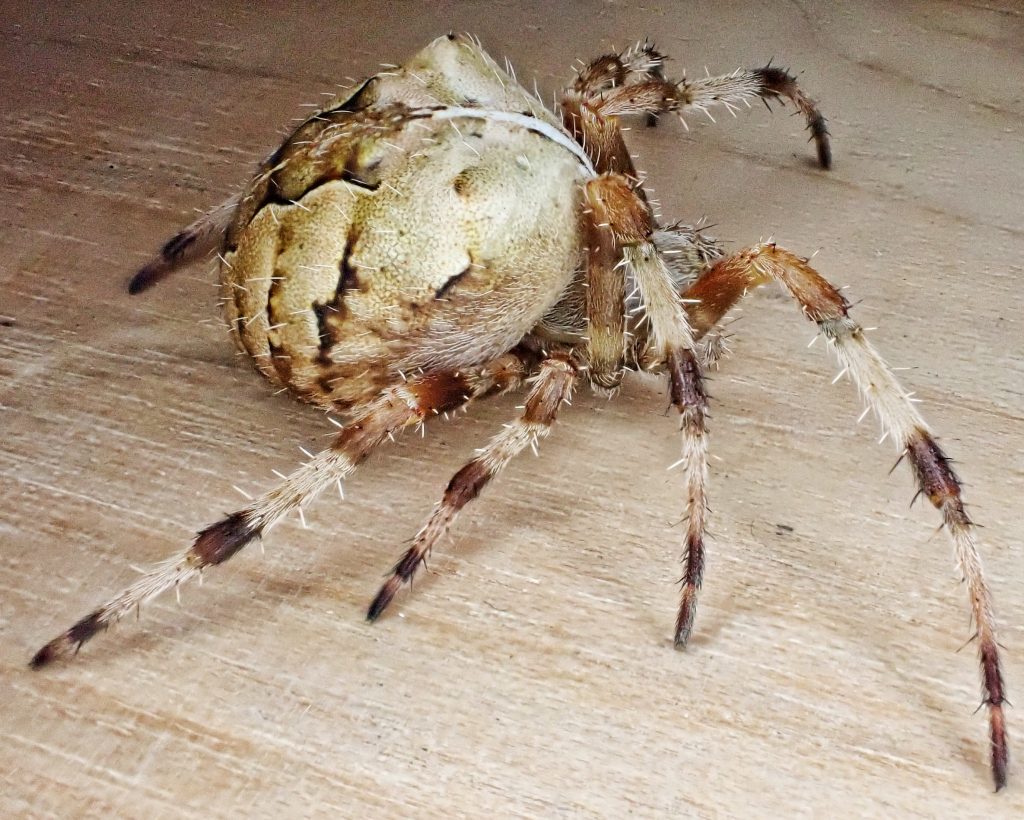
Species Araneus gemma – BugGuide.Net
Araneus gemma – Spider Identification & Pictures
https://en.wikipedia.org/wiki/Araneus_gemma
